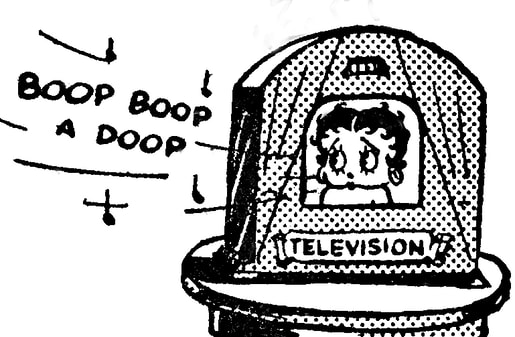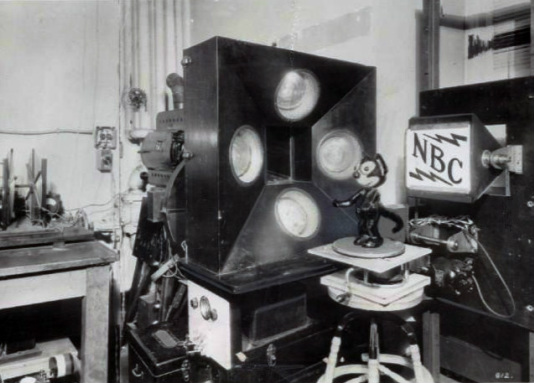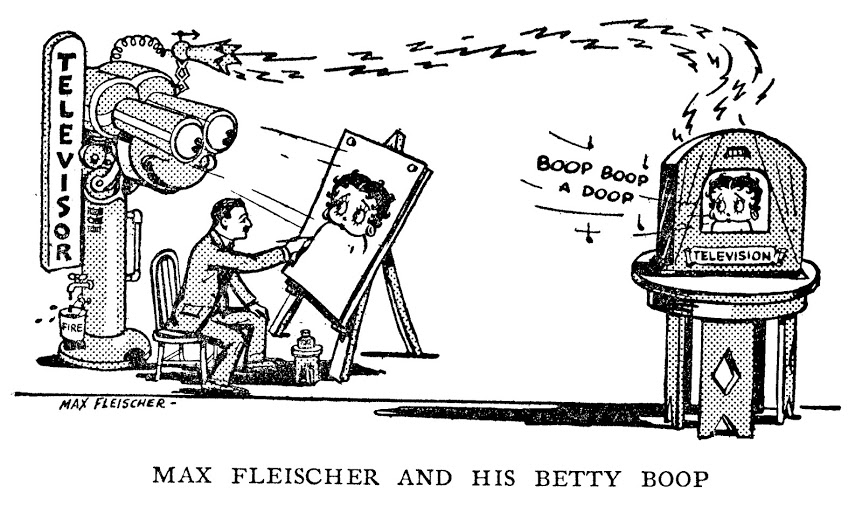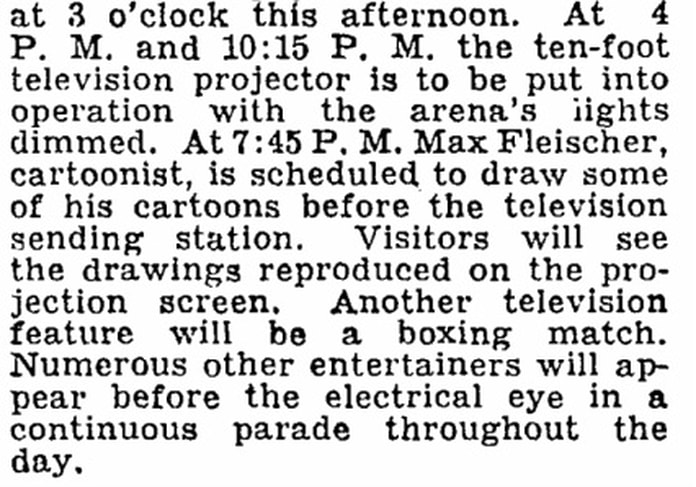Who starred in the very first animated cartoon to be broadcast on television?
Betty Boop! And this is how it happened...
Betty Boop! And this is how it happened...
|
|
A Felix the Cat that rotates
When serious interest in television in the U.S. began in the mid-1920s, a major challenge was to produce a transmitted image of decent quality. In order to improve the image transmitted, it was decided to use a small statue of Felix the Cat, a well-known animated character of the day. Felix’s image was to be transmitted from the television studio to serve as a test broadcast. Felix was just right for this purpose… the right color (black and white) and, as a statue, would be unaffected by the intense heat from studio lights.
Betty Boop moves, talks, sings and in the first ever televised cartoon!
Betty Boop, who made her first film appearance in 1930, soared to stardom just as television had advanced to the point of serving as a sort of side-show to the already popular radio shows. In fact, many of the first television demonstrations were presented as part of ‘Radio Shows.’ Below is an account of Betty’s first television appearance from the book “Gateway To Radio” by Major Ivan Firth and Gladys Shaw Erskine. Like many experimental television demonstrations of the day, the format was that of a variety show, much like vaudeville. Max and Betty were presented as one of the ‘acts.’ The text below is taken from the last chapter of that book entitled "The Future of Radio.” But perhaps the most successful of all our programs was that in which Max Fleischer, the beloved creator of Koko the Clown, Barnacle Bill, Betty Boop, Bimbo, and a host of other pen and ink stars, appeared for us in person in a presentation of the first animated cartoon to be televised. Standing in front of the brilliant light, Max Fleischer, while carrying on a running conversation with Miss Erskine, drew with rapid sure strokes of his charcoal pencil the pert Miss known to millions as Betty Boop. Suddenly, lo and behold, Miss Boop (Betty to her intimates) came to life, rolled her eyes, blinked her famous lashes, and then, without more ado opened her pouting mouth and sang her Boop-a-doop song, with all the allure of lowered lids. So successful was this feature that it was selected as the only program to be presented at the World’s Radio Fair at Madison Square Garden on the ten foot screen.”
One of the major people working to develop television at the time was Ulises A. Sanabria. Sanabria envisioned the future of television as a tool to be used mainly by theaters for the purpose of showing motion pictures. As a result, Sanabria directed his work at creating large scale viewing screens, such as the ones he used in Madison Square Garden. By 1931, when Max and Betty appeared at Madison Square Garden using Sanabria’s equipment, the screen was a ten foot tall piece of plate glass, frosted on one side and weighing 350 pounds, with the image projected on it from behind.
Fun Fact
Interestingly Betty, being fully animated, did not suffer from the depth of field problems that plagued live performers in the early days of television (including the Felix doll turning endlessly on his turntable.) Betty, being two-dimensional, was always in focus! One can only imagine that this clarity of image made Betty’s television debut an even more remarkable experience for those in the audience! |




